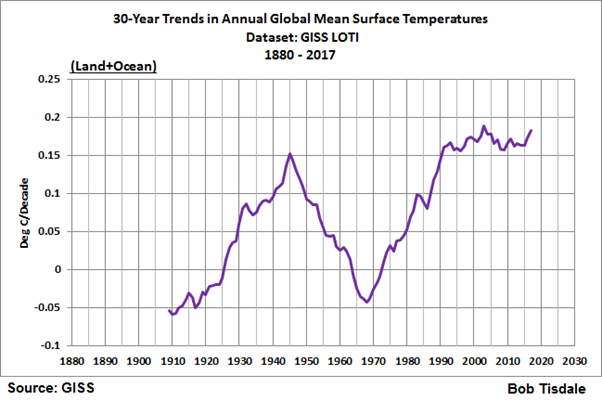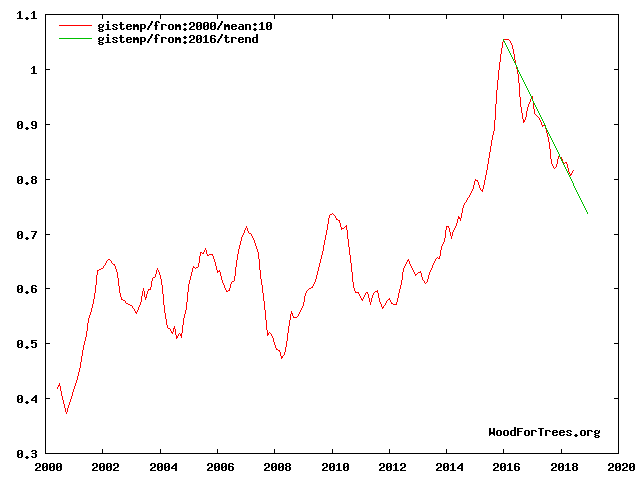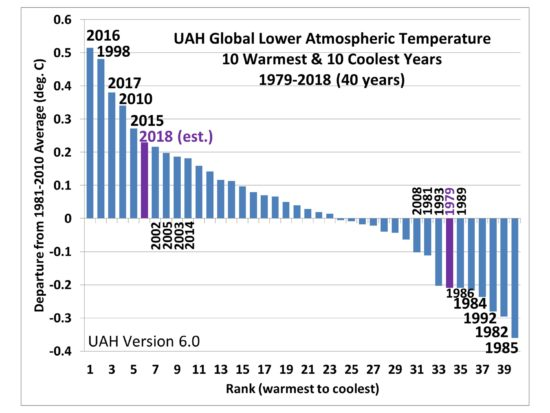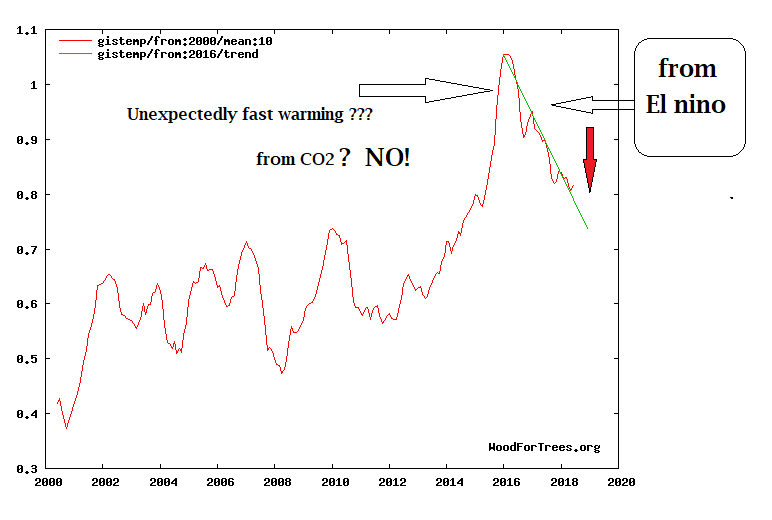The last IPCC report was in 2014, mostly based on reports compiled in 2013. This was AR5, (Assessment report 5). In Figure 2.1 and elsewhere, it is indicated that the “business as usual case” (A2), which refers to a continued increase in GHGe, the predicted rate of increase in temperature is 0.04 deg C per annum, with the graph indicating that it was expected to take 10 years for global average temperature to increase from the 2014 level (0.6 deg C above pre-industrial levels) to the 1 deg C mark. The increase in temperature above pre-industrial levels is referred to as the temperature anomaly.
Per the most recent NASA Goddard Institute for Space Studies estimates of global average temperature, you can see that we are basically already knocking on the door of 1 deg C, slightly less than five years after the report was issued.
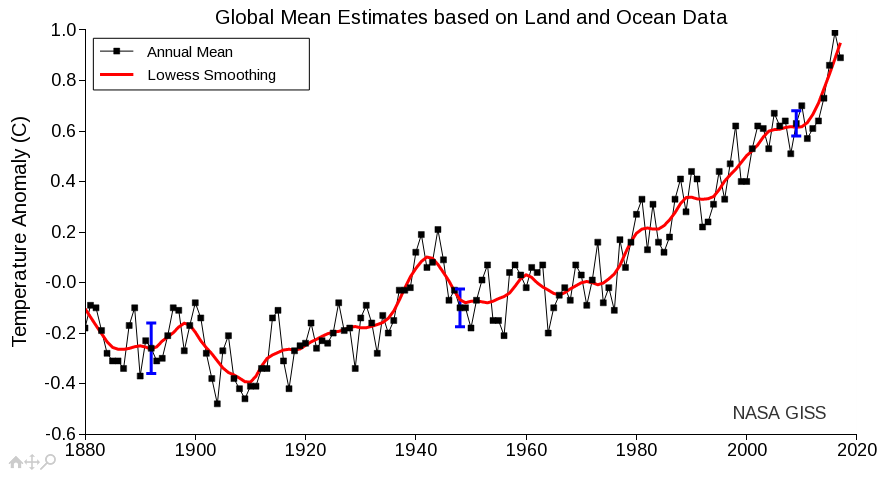
In other news, the incorporation of previously overlooked data has resulted in an estimate of the increase in the rate of ocean temperature warming.
https://www.scientificamerican.com/article/oceans-are-warming-faster-than-predicted/
January 11, 2019
Oceans Are Warming Faster Than Predicted
Earth’s seas are absorbing excess heat 40 percent faster than previous estimates
Up to 90 percent of the warming caused by human carbon emissions is absorbed by the world’s oceans, scientists estimate. And researchers increasingly agree that the oceans are warming faster than previously thought.
Multiple studies in the past few years have found that previous estimates from the Intergovernmental Panel on Climate Change may be too low. A new review of the research, published yesterday in Science, concludes that “multiple lines of evidence from four independent groups thus now suggest a stronger observed warming.”
Another activity that had previously largely been overlooked was the loss of ice from the mainly non-glacial SW coast of Greenland
https://www.theguardian.com/world/2019/jan/21/greenland-ice-melting-faster-than-scientists-previously-thought-study
22 Jan 2019
Greenland’s ice melting faster than scientists previously thought – study
The pace of ice loss has increased four-fold since 2003 as enormous glaciers are depositing ever larger chunks of ice into the Atlantic ocean, where it melts, causing sea levels to rise
Greenland’s ice is melting faster than scientists previously thought, with the pace of ice loss increasing fourfold since 2003, new research has found.
Enormous glaciers in Greenland are depositing ever larger chunks of ice into the Atlantic Ocean, where it melts. But scientists have found that the largest ice loss in the decade from 2003 actually occurred in the south-west region of the island, which is largely glacier-free.
This suggests surface ice is simply melting as global temperatures rise, causing gushing rivers of meltwater to flow into the ocean and push up sea levels. South-west Greenland, not previously thought of as a source of woe for coastal cities, is set to “become a major future contributor to sea level rise”, the research states.
The Sixth Assessment report of the IPCC is not due until 2022 but it’s working groups have already commenced their research phases and we can expect there will be much to update.
